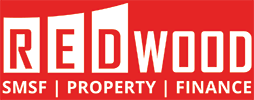In the Self-Managed Superannuation Funds (SMSF) world, valuing assets at “market value” has always been essential to reflect the real value of the fund. However, recent scrutiny from the Australian Taxation Office (ATO) has brought this issue to the forefront of discussions within the SMSF community.
The ATO has raised concerns about SMSF’s consistently reporting certain asset classes particularly property, at the same value for multiple income years – indicating no regular appraisals. As a result, SMSF trustees are now tasked with ensuring compliance with stringent ATO valuation guidelines.
In a recent publication, the ATO highlighted the significance of valuing assets at market value, particularly focusing on approximately 16,500 funds that have reported assets at consistent values for at least three consecutive income years. This includes assets such as residential and commercial properties, unlisted companies, and unlisted trust investments. The ATO has stated that “Incorrectly valuing assets can lead to severe consequences, including non-compliance and/or hefty fines imposed by the ATO.”
So, what does it take to satisfy the ATO’s requirements and prove that an asset has indeed been valued at market value? Is a casual opinion from a friend sufficient? Or perhaps the sale price of a neighbouring property? The ATO has made it clear that they expect concrete evidence to support valuation, and they’ve provided extensive guidelines to assist SMSF trustees in meeting these requirements.
Some Market valuation guidelines
Here are some legitimate evidence sources, especially for valuing commercial properties, as outlined by the ATO:
Valuation by Professional Valuer’s: The ATO emphasizes that valuations conducted by professional valuers hold more credibility than those provided by non-professionals. Professional valuers may include individuals registered or licensed to conduct real property valuations under Commonwealth, state, or territory laws, or those who are members of recognized valuation institutes such as the Australian Valuers Institute, Royal Institute of Chartered Surveyors (RICS), or Australian Property Institute.
Comparable Sales Results: Assessing the value of similar properties and recent comparable sales results can provide valuable insights into the market value of a commercial or residential property. Evidence may be collated based on subscriptions to market data such as RP Data which provides a comparative market analysis. Further analysis may be provided by data on internet sites such as Real Estate.com.au which provides an estimated range. All findings should be documented.
Rates Notice with Council Valuation: A rates notice from the local council, which includes the council’s valuation of the property, can serve as additional evidence of market value. Councils now employ independent valuers and may value the property at least monthly given the positive property market – higher valuations equals higher rates and therefore valuations have become very regular!
Independent Appraisal from Real Estate Agent: An independent appraisal from a reputable real estate agent, conducted from a kerbside perspective, can offer another perspective on the property’s market value, although should not be relied on alone.
It’s essential to note that while each of these evidence sources can contribute to proving market value, it’s generally good practice to gather multiple pieces of evidence to strengthen your case. Relying on a single source may not be sufficient to satisfy the ATO’s requirements. All data should be collated and documented by your accountant and / or auditor to support valuation.
In conclusion, SMSF trustees must be diligent in adhering to the ATO’s guidelines regarding asset valuation, particularly in light of increased regulatory scrutiny. By ensuring that assets are valued at market value using credible evidence sources, trustees can mitigate the risk of non-compliance and maintain the integrity of their SMSFs. The ATO scrutiny will increase in the 2024 year and trustees are on the hit-list so be sure to reach out to Redwood for guidance on how to stay out of the ATO microscope.




